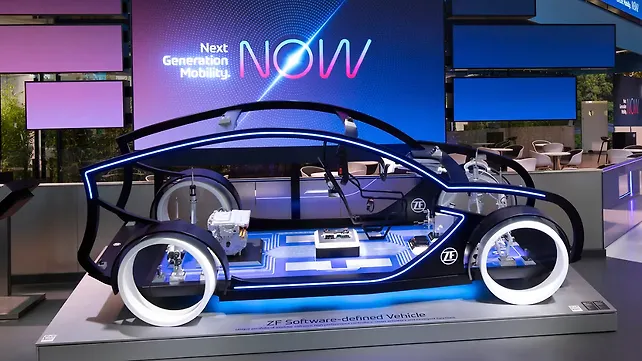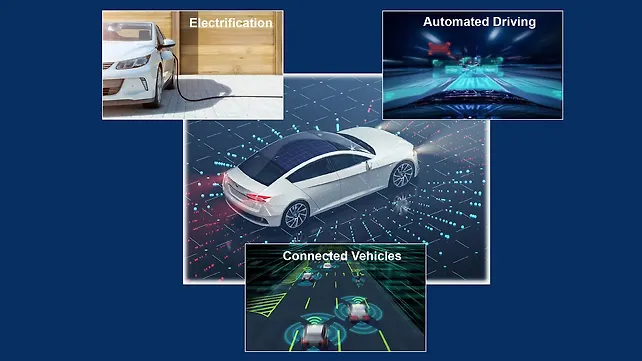
The article is co-authored by R Vijayalayan
The vehicles of tomorrow that promise to achieve the goal of shared carbon-neutral mobility will be autonomous, electric, connected, and software-defined. Automotive organisations are investing in digital capabilities to shift from designing and developing vehicles to providing state-of-the-art, end-to-end mobility and digital services, known as the Software-Defined Vehicle (SDV).
The vision for SDVs is a superior user experience delivered through technology. To enable this vision, the auto industry is reshaping itself around software-based experiences.
We have seen the established vehicle development process serve the industry well over the years; however, the development process for future cars drives the need to transform agile development into an automotive-grade development process.
Today, the components and systems groups see that software will help them extract maximum capability and efficiency from the engineered system. However, digital groups view automotive software to meet mobility objectives that generate new value for the organisation, not only to improve vehicle functionality. It is paramount that decision-makers have a clear strategy for how their organisation will develop the software-defined vehicle to enable this value creation.
This article examines four vital technological trends driving research and vehicle development.
1. Evolving Vehicle and Software Architecture Requirements
With the exponential rise of software, significant computing power is also required. However, adding computing power alone is not enough; new architectures are required to consolidate and centralise the computing power into a small number of vehicle and zone controllers, moving away from traditional distributed architectures with dozens of control units and limited communication bandwidth.
Along with the evolution of vehicle architectures, there is also a new software development shift paradigm towards discrete event-driven architectures, including Service Oriented Architecture (SOA). For greater efficiency, software must decouple from hardware, giving rise to middleware and virtual machines.
One crucial point about this evolution is the need for developers to migrate their existing components to new architectures and reuse existing workflows. Model-Based Design enables engineers to design their software once and deploy it to many targets.

2. Cloudification
Software build, test, and simulation are shifting to the cloud. This trend is very likely to accelerate in the coming years both for interactive development in the cloud and for scaling use cases. Furthermore, the move to cloud also promises to enable team collaboration and break down silos within organisations.
The move will help automobile makers provide on-demand mobility and data-driven services. This trend is set to add additional revenues in billions for the industry in the next decade. Connectivity, and later autonomous technology, will increasingly allow cars to become platform for media and hosted services. The increasing speed of innovation, especially in software-based systems, will require cars to be upgradable.
To capitalise on this value-add, organisations should carefully develop their cloud strategy and ensure that expected risks have not just been worked out, but also mitigated and managed. A cloud-ready tool-chain must also support DevOps for three use cases:
- Core Development and fleet testing;
- Continuous system development and field updates through OTA; and
- Mobility products and services.

3. AI is Powerful, Yet Elusive for Some Automakers
Automakers are looking at applying AI techniques, such as Machine Learning and Deep Learning, to build better vehicles, improve existing workflows, and enable new types of algorithms and functionality in the field because Software-Defined Vehicles generate large amounts of data. Beyond the hype and a few popularised applications, AI integration has proven to be difficult for many organisations.
A 2020 Gartner survey helps reveal some of the reasons why [1]. Three main challenges include integration with existing technology, data complexity/quality and lack of AI skills.
A holistic approach is required to apply AI into auto engineers’ workflows. Three integral steps to achieving this are data preparation, AI algorithm development and simulation and test and deployment.
These steps enable domain experts to start their data journey with low code/ no code platforms, while providing the required flexibility for advanced engineers.
4. Virtual Development
Virtualised vehicle development and testing using simulation help auto engineers meet shrinking timeline and improve efficiency. In addition, there’s a need for pre-built vehicle reference models to lower the barrier to start virtual design. Engineers can use these models for design trade-off analysis and component sizing, control parameter optimisation, and hardware-in-the-loop simulations.
This approach, coupled with data analytics, enables engineers to perform virtual testing or calibration which creates time and cost savings for automakers. With the increase in software content in today’s electric vehicles, companies are also turning toward virtual vehicles to test their software as soon as possible.
Summary
A Software-Defined Vehicle will enhance every aspect of mobility. However, for automotive R&D organisations, SDV transformation also means transformation in engineering the vehicles.
The four technology trends driving research and development in design of Software-Defined Vehicles are evolving architectures, cloudification, use of AI and virtual development.
With the promise of vehicles to be perpetually upgradable, automobile organisations need a process where development engineers can work closely with IT and operations to deploy functions with agility.
With the advent of AI and cloud connectivity, we can expect more personalisation, comfort features, infotainment features in the Software-Defined Vehicle.
About the Authors:Rashmi Gopala Rao is Principal, Automotive Industry Manager at MathWorks India responsible for strategic planning and technology rollout for the India region. She has more than two decades of industry experience working in diesel control systems, body control, chassis, and ADAS domains.
R Vijayalayan currently manages the Automotive Industry Field Application Engineering and Control Design Verticals Application Engineering at MathWorks India. He specialises in the field of Model-Based Calibration, Electrification, Full Vehicle Modelling and Model-Based Design. He and his team members closely work with Automotive OEMs & Tier I suppliers in adopting Model-Based Design for system simulation, virtual calibration, embedded code generation & verification and real-time testing. He has around 18 years of industry and academic experience.
Reference:
Also Read:
Renault Picks KPIT As Its Software Scaling Partner For SDVs
Honda, Sony To Evolve As Software-oriented Mobility Tech Company